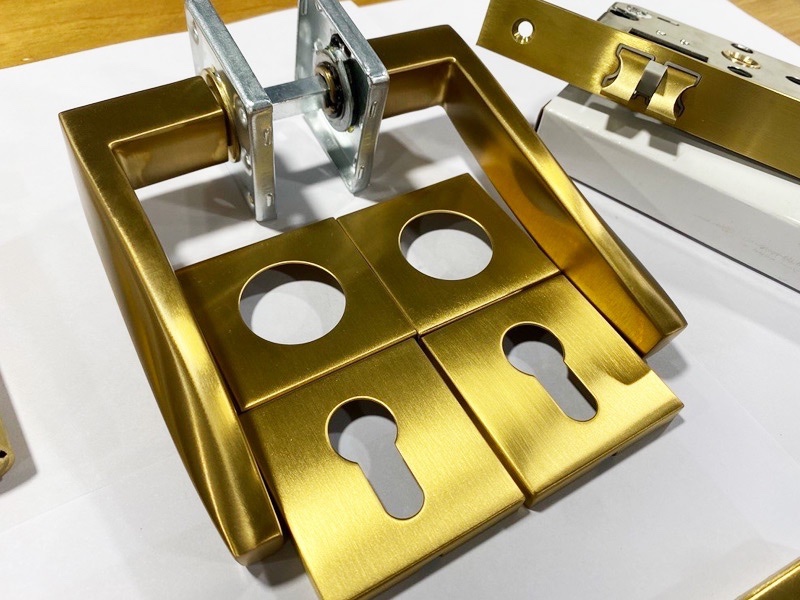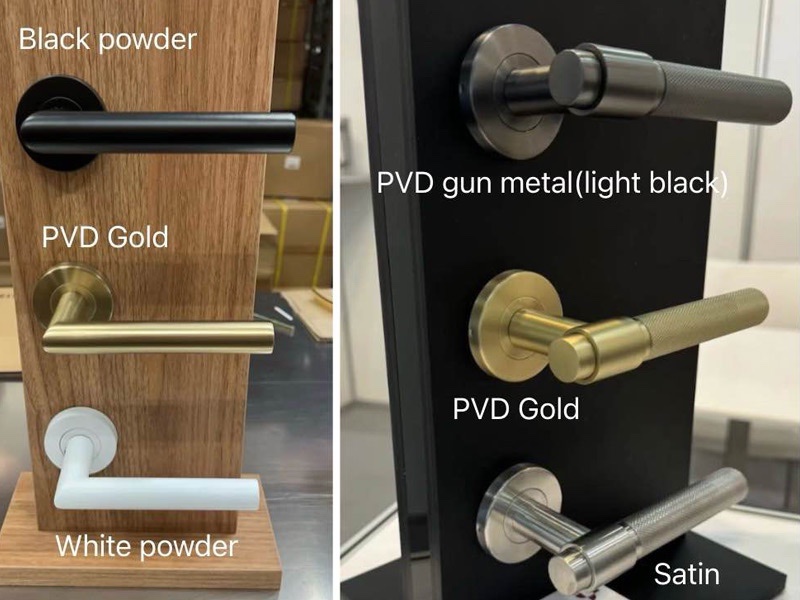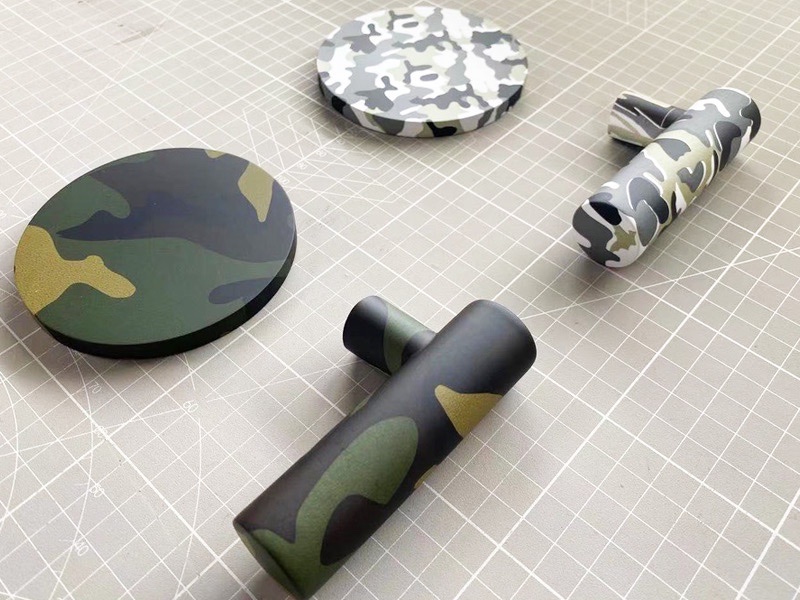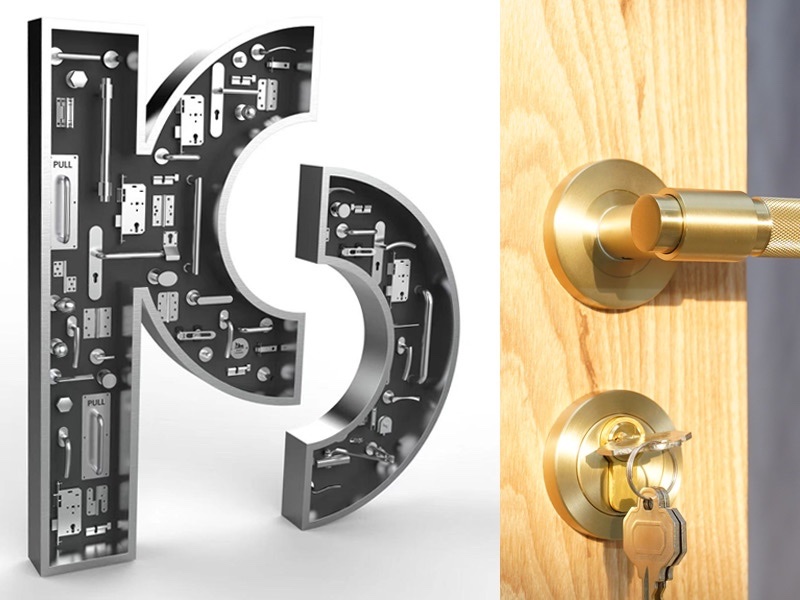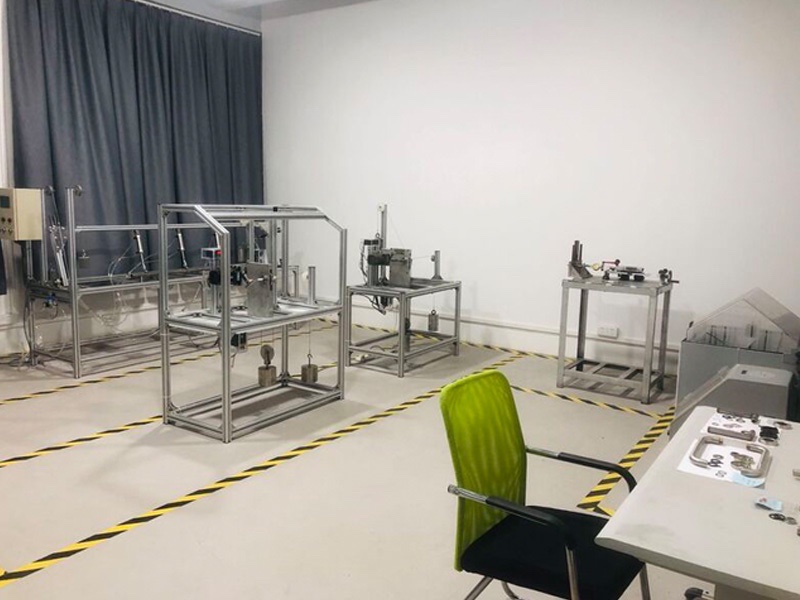Surface Coating Process Guidelines
1, Surface Preparation Requirements
PVD Coating:
Requires Class-A surface finishing (Ra ≤ 0.2μm per ISO 1302)
Demands precise tooling marks alignment (≤0.05mm deviation)
Powder Coating:
Tolerates surface roughness up to Ra 3.2μm (ASME B46.1)
Sandblasting at 80-100 grit suffices for adhesion enhancement
2, Application Environment
| Coating Type | Recommended Use | UV Exposure Limit |
| Standard Powder | Indoor applications | ≤200kLux/year (EN 12206) |
| NTUV Powder | Outdoor/balcony use | ≤600kLux/year (AAMA 2604) |
Note: NTUV coating extends color retention to 5+ years under 450nm UV radiation (per ASTM G154 Cycle 4)
3, Technical Specifications
| Parameter | PVD | Standard Powder | NTUV Powder |
| Weathering Resistance | ΔE<2 @1500hrs | ΔE>5 @500hrs | ΔE<3 @2000hrs |
| Surface Hardness | HV800-1200 | HV200-300 | HV350-450 |
| Cost Multiplier | 5X | 1X | 2.5X |
4, Commercial Advisory
PVD: Recommended for luxury/hospitality projects requiring mirror-grade finishes
NTUV Powder: Optimal for residential exteriors with 15-year warranty coverage
Standard Powder: Cost-effective solution for indoor hardware (3-year fade warranty)
Surface Coating Process Specifications
1. Stain Resistance Performance
PVD Coating:
Shows fingerprint susceptibility (>85% visible mark retention rate in ASTM F1319 testing)
PVD + Lacquer Composite:
Achieves fingerprint-resistant certification (ISO 4618 Class B standards) through nano-scale surface encapsulation
2. Weathering Resistance
PVD Coating:
Recommended for exterior applications with mandatory cross-cut adhesion ≥4B (ASTM D3359)
Outdoor fading threshold: ΔE>5 after 1,500hrs QUV accelerated weathering (ASTM G154)
PVD + Lacquer Composite:
Extends color stability by 50% (ΔE>5 after 2,250hrs) with 3-layer UV-blocking protection
Comparative Process Metrics
| Metric | PVD | PVD+Lacquer |
| Unit Cost | 1X | 5X |
| Yield Rate | 98% | 72% |
| ROI Cycle | 12 Months | 18 Months |
*Note:
"X" represents baseline cost multiples
Yield rate reflects production batch compliance with MIL-STD-1916 criteria
ROI calculation based on 5-year TCO (Total Cost of Ownership) modeling*
Note: Cost differentials originate from yield loss in hybrid vacuum deposition-UV curing processes and dual-layer QA protocols
Analysis of Hydrographic Printing Application in Door Hardware Surface Finishing
Analysis of Hydrographic Printing Application in Door Hardware Surface Finishing
I. Process Advantages
1. Exceptional Process Adaptability
Complete pattern coverage on complex geometries
Customizable designs with client-driven pattern creation
2. Cost Efficiency
Industry-leading affordability for customized finishes
80%+ mold cost reduction for new product development
3. Family-Style Design Extension
Unified aesthetics across product lines (handles, locks, door closers, etc.)
Seamless pattern transitions enhance brand consistency
4. Environmental Durability
Derived from motorcycle exhaust treatment technology
Withstands -20°C to 80°C; 40% improvement in UV resistance (ASTM D4587 compliant)
II. Process Limitations
1. Minimum Order Requirements
Base production threshold: 2,000 standard units per order
5,000-unit minimum for specialized designs (e.g., lever handles)
2. Cost Structure Considerations
15-20% higher unit cost vs. standard finishes
Marginal cost reduces to 92% of conventional processes for 10k+ unit orders
3. Production Timeline Constraints
72-hour curing cycle for pattern stabilization
Multi-color printing increases lead time by 15%
Overview of PCS product classification
Overview of PCS product classification-There are about 211 models of the design, with 33 models of independent R&D. The economy models are 679 in total.
Our products are divided into 4 categories according to different applications, Handle, lock, hinge and Door accessories. Each category is subdivided according to the market habits to make it easier for customers to search.
‘Recommended models’ are categorised according to their original purpose and according to the market need they address. Take Lever handle as an example:
Functional products: Quick install handles, lock handles;
Certified structures: EN1906 Grade 3/4; Fire rated 30/60/90min;
Exterior design products: ultra-thin models, design lever, knurled handle;
Economic indoor products: low-cost economic handles based on price considerations;
What's more, our company can be combined and matched according to what customers need, for example the 1+2+3 list above.
And new design Grade 3 quick-install handles.
We have lots of products to meet the needs of different customers in different markets.
As of December 2024, we had 971 models of products available supply all over the world.
All the below items are running each day in our testing centre
All the below items are running each day in our testing centre, on purpose to supply customers helpful data and suggestion before sending new models to the Certification firm.
EN1906 G3/G4 test
BS8424 pull handle test
Violence test
Destructive test
Dalt spray test
Axial test
Load bearing test
Lifetime test
#Manufactory #Doorfitting #Hardware #EN1906 #BS8424 #ironmongery

